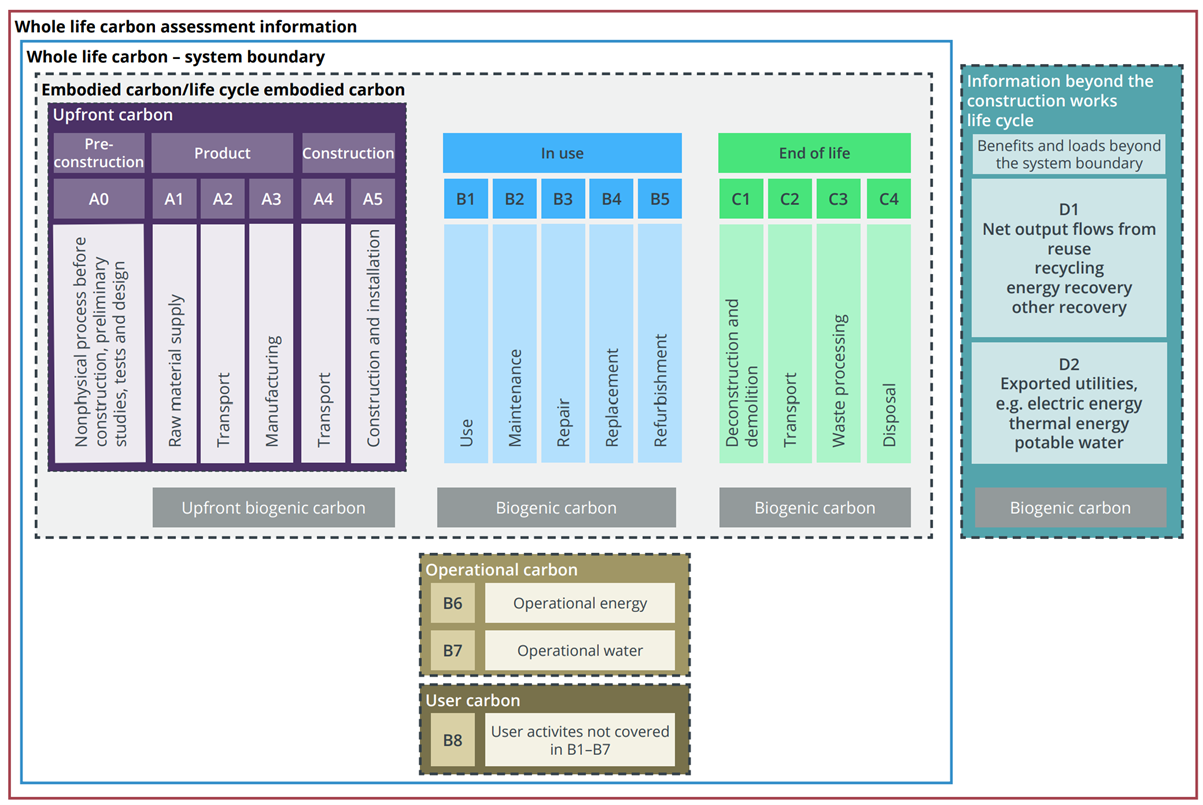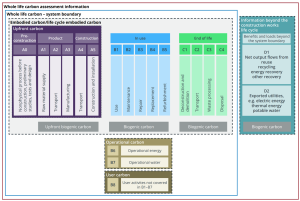

In the world of construction, measuring the environmental impact of our properties and infrastructures have become increasingly crucial. But what exactly should we measure to understand our carbon footprint fully?
That’s where The Royal Institution of Chartered Surveyors (RICS) and their Whole Life Carbon Assessment (WLCA) standard comes in. First introduced in 2017 and updated it in November 2023, WLCA is set to become the world-leading standard for consistent and accurate carbon measurement in the built environment.
This article will walk you through what exactly is WLCA and why is it important for those in the building industry to pay attention to it.
The RICS WLCA is a method for measuring carbon emissions of building and infrastructure projects throughout their entire lifespan.
It sets the bar for how we estimate the amount of carbon emitted by construction projects, from the early stage of development planning to the end of its useful life. Its main aim is to ensure that the data we collect on carbon emissions is consistent, accurate, and comparable across different projects and asset types.

Source: RICS whole life carbon assessment for the built environment, building and infrastructure life cycle stages and information modules (adapted from EN 15978, EN 17472 and EN 15643, with additions to illustrate biogenic carbon).
It’s important to note that WLCA doesn’t include certain factors like carbon offsets, temporary carbon storage or permanent biogenic carbon storage as part of the calculation at product or asset level.
The arrival of the 2nd edition of RICS WLCA represents a significant step forward for the building industry’s approach to environmental sustainability. It addresses the industry’s challenge of lacking a universal carbon measure, where multiple standards exist with varying parameters for inclusion and exclusion in assessments.
Due to its comprehensive nature and applicability across asset types, RICS WLCA sets the bar for measuring carbon emissions in construction projects. We anticipate that this will shape future standards, methodologies, and sustainability frameworks globally.
The Footprint Company has long respected the thoroughness of the RICS guidelines and refer to them when conducting carbon assessments.
As industry professionals, it’s crucial to broaden our perspectives during assessments, uncover hidden impacts, and explore practical low carbon solutions. Whether you’re an investor, developer, architect, engineer, or contractor, integrating WLCA into your practices promotes environmentally conscious decision-making and contributes to a greener planet.
Start implementing WLCA in your projects today.
Reach out to us to learn more about how you can integrate WLCA into your projects with our technology enabled carbon consultancy services.